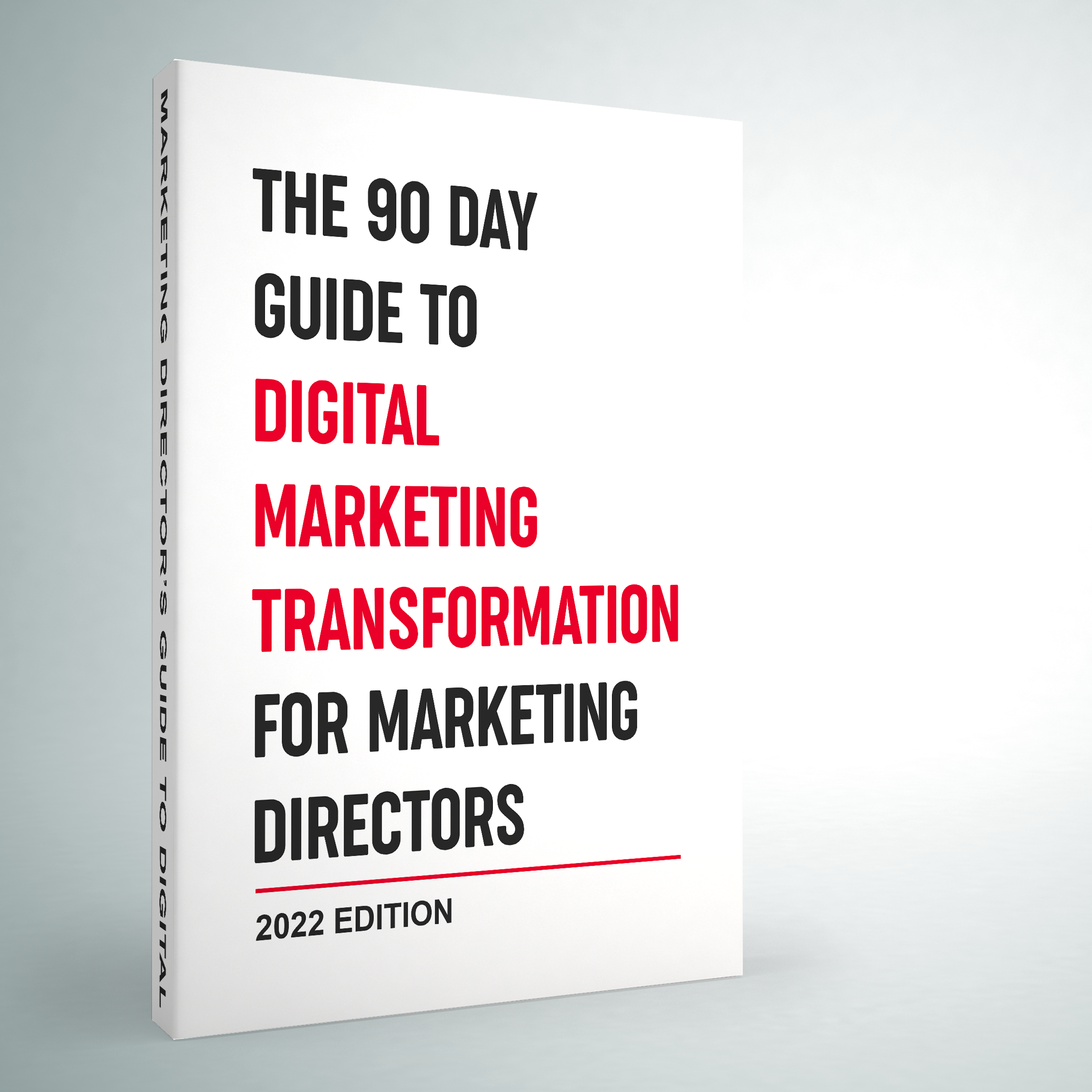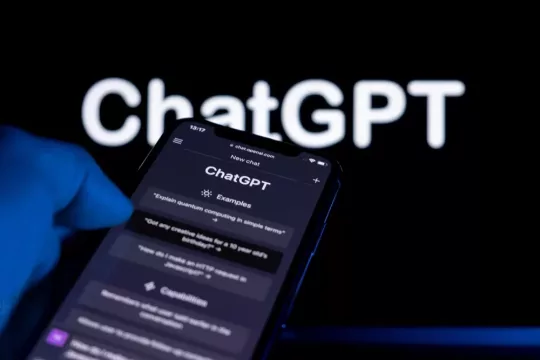
The melee around ChatGPT, however, is a different monster – for a few reasons:
- The subject matter experts publish in academic and research journals, which create considerable barriers to access for those of us outside the data science community. Very few recent and highly-relevant articles are ‘free access’, usually costing $50 USD for a PDF download. Perhaps the more significant barrier is the fact that these articles are written by scientists for other scientists, so basic concepts aren’t defined or explained to any degree.
- Artificial intelligence (along with nuclear energy, GMO’s, human cloning, etc), tends to elicit a very strong emotional response from people. Existing narratives exacerbate a prevalent fear of artificial intelligence, and things start to spiral. News outlets recognize the opportunity to publish inflammatory headlines, and objectivity is compromised by decades of exposure to science fiction.
- The truly unnerving phenomenon of ominous warnings about AI from Silicon Valley itself. For example, Elon Musk’s 2018 interview with Joe Rogan where he called AI our biggest existential threat. Recently he added his weight behind Republicans’ condemnation of the platform when he replied “very important thread” to a Tweet emphasizing a claim that “ChatGPT is a Democrat”.
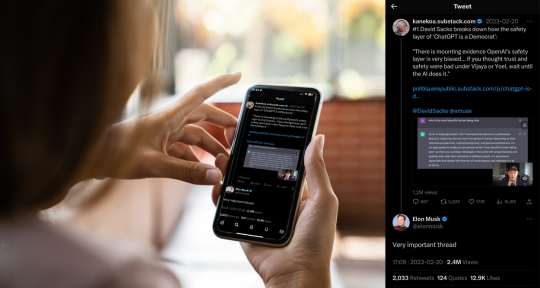
The thing is, something really exciting is happening here, and we want to make it easier for people to get their bearings in the post-ChatGPT AI landscape.
The objective of this article is to provide simple, objective answers to a few common questions about ChatGPT. To make finding your way even easier, click a topic and jump to where you want to go:
Why did ChatGPT blow up like this?
If you’ve logged into ChatGPT, I don’t need to tell you how different the experience is. In terms of the Turing Test (how human-like an AI behaves), experts say it meets the criteria on every vector except emotion. Basically, technology has caught up to the fictional portrayal of AI that we grew up with. We’re closer to having our own C3PO than ever before.
Accordingly, when word got out that everyone could have their very own ‘first contact’ experience with a ‘robot’ – people went nuts.
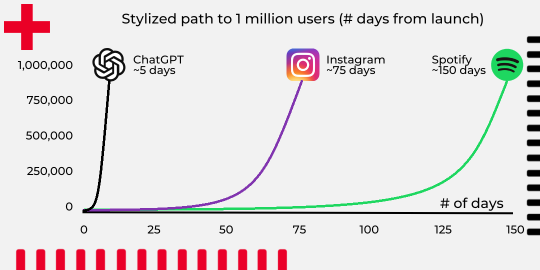
The response was unprecedented, but, in my opinion, not unwarranted. Even though the proliferation of AI (in one form or another), has increased steadily alongside the number of digital devices and touchpoints in our daily lives, it was either imperceptible (algorithms, predictive text) or distinctly robotic (Alexa, Chatbots). AI was running silently in the background, popping up on your screen uninvited, or interrupting you by responding to “Hey, Alexa,” at the wrong time. On top of that, the extent of your ability to customize the AI around you was, for the most part, binary. On or off. Opt-in, or opt-out.
Enter ChatGPT and, suddenly, the barrier that kept us on our respective sides of the human-computer interface dissolved. For the first time, anyone with a laptop and wifi could freely interact with artificial intelligence – a term that (for many of us) has felt more like a genre of science fiction than real-life tech applications.
Why is ChatGPT free?
Open AI’s business model is based on licensing products that are accessed through their API platform, but there is no API key available for ChatGPT.
Click here to see examples of what the models that do offer API keys can be used for. One well-known example is the fine-tuning and integration of GPT-3 for French grammar translations in the Duolingo app.
What is ChatGPT, really?
ChatGPT is the interface through which users are training the Open AI’s GPT language models via Reinforcement Learning from Human Feedback (RLHF).
If you’re like me, this information might have you doing a double-take.
ChatGPT is learning? And users are teaching.
Yes, exactly. At this point, it will be helpful to orient ChatGPT relative to artificial intelligence and introduce a few more specific terms:
ChatGPT falls into these descriptive categories:
- Generative AI
- Large Language Models (LLMs)
The machine learning technique used:
- Pre-trained (transfer learning technique)
The architecture it is built on includes:
- Neural Network
- Transformer
The algorithm or input/output used:
- Natural Language Processing (NLP)
- Deep Learning
In relation to artificial intelligence, large language models (LLM) belong to both the neural network and deep learning subsets. While many LLM’s employ NLP, ChatGPT is generative, meaning instead of being programmed to select the most-likely option from a static list (predictive AI), it’s able to generate original outputs. This combination is part of what allows GPT models to be conversational.
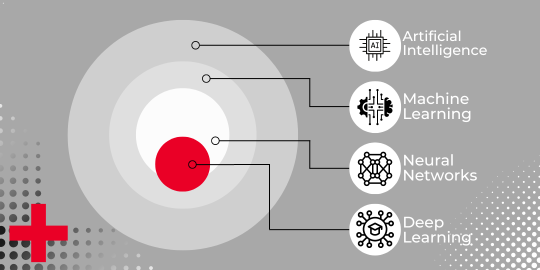
Want to know more about Generative AI and Natural Language Processing (NLP)?
Here are some great resources:
Straight-forward answer to “What is Generative AI?” – McKinsey & Co., 2023
Easy-to-read article on the history of NLP – Medium
We’re skipping transformers because, while they are integral to the machine learning process, they are prohibitively complex. After reviewing this article, I understand why I could not find a source that explains transformers in layman’s terms.
That brings us to ‘pre-trained’, a.k.a. the ‘P’ in GPT. Pre-trained NLP models are also called reusable models, and the investment made into developing them is immutable. As each version of GPT is released, its neural network becomes increasingly rich and refined.
By offering this “veteran” NLP model to customers, Open AI makes integrating an intelligent, generative bot into apps and platforms incredibly accessible. This is a profound breakthrough in the decentralization of web services. Think of it like this: imagine you’ve always taken the bus because, even though you own a vehicle, it doesn’t run. You use it for other things, but, like most people, the barrier that prevents you from driving the car is insurmountable. That is, until a vendor appears who is offering licenses to technology that unlocks the kinetic energy in your car and puts you in the driver’s seat. Suddenly, the possibilities are endless.
GPT-3 is Open AI’s current LLM offering. Unlike ChatGPT, it is able to access real-time information from local networks or the internet at large. What makes pre-trained language models especially relevant to business owners is that they are meant to be fine tuned, or customized, for specific applications such as law or medicine.
Are open source AI platforms like ChatGPT safe to use?
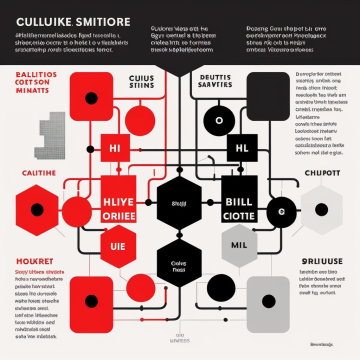
Good question. Currently, AI technology is unregulated. My advice here is to be diligent when it comes to reading the terms of use, as well as trust and safety policies for the platforms you are using. Below are some links to agencies who are working toward policies and regulations regarding artificial intelligence.
Leverhulme Centre for the Future of Intelligence – Research on the Nature and Impact of AI
European Union – Regulatory framework proposal on artificial intelligence
United Nations – Office of the Secretary-General’s Envoy on Technology
Artificial Intelligence, Digital Human Rights, Inclusion, Trust & Security – “Ongoing work’
Canadian Cyber Security – Guidance page & National Cyber Threat Assessment 2023-2024
For Canadians, Bill C- 27 is currently making its way through the House of Commons.
This bill is known as Digital Charter Implementation Act, 2022 and includes the Artificial Intelligence and Data Act.
sets out new measures to regulate international and interprovincial trade and commerce in artificial intelligence systems. It would establish common requirements for the design, development, and use of artificial intelligence systems, including measures to mitigate risks of harm and biased output. It would also prohibit specific practices with data and artificial intelligence systems that may result in serious harm to individuals or their interests. (justice.gc.ca)
To keep up with the progress of this bill, click here.
Open source AI platforms to keep an eye out on in 2023
1. GPT-4 release date
- The volume of headlines suggesting that we can expect GPT-4 to be released any day now would make you think so, but the rumors are unfounded.
- If you want OpenAI info straight from the source, Sam Altman is very active on Twitter – keep an eye on his page and tune out the rest.
- To hear Altman debunk some of the crazier claims and share what’s next for AI, listen to his September 2022 interview with StrictlyVC.
- Microsoft recently became the largest shareholder of OpenAI, but their partnership goes back to 2019
- Microsoft Azure is the exclusive cloud platform for OpenAI
- Microsoft Teams Premium uses GPT-3.5-turbo to transcribe and create speaker summaries
- If you don’t have access to Teams Premium, you could try the latest GPT model soon by getting on the waitlist for the new Bing Chat function.
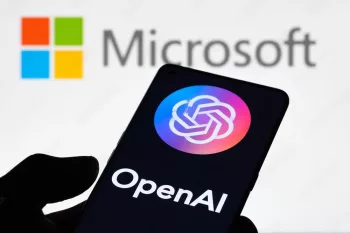
3. Elon Musk just announced that he will be developing a ChatGPT rival
- We don’t necessarily ascribe to Musk’s impetus of “combating woke AI”, but market competition in the “chatbot race” means good things for users.
The response was unprecedented, but, in my opinion, not unwarranted. Even though the proliferation of AI (in one form or another), has increased steadily alongside the number of digital devices and touchpoints in our daily lives, it was either imperceptible (algorithms, predictive text) or distinctly robotic (Alexa, Chatbots). AI was running silently in the background, popping up on your screen uninvited, or interrupting you by responding to “Hey, Alexa,” at the wrong time. On top of that, the extent of your ability to customize the AI around you was, for the most part, binary. On or off. Opt-in, or opt-out.
Enter ChatGPT and, suddenly, the barrier that kept us on our respective sides of the human-computer interface dissolved. For the first time, anyone with a laptop and wifi could freely interact with artificial intelligence – a term that (for many of us) has felt more like a genre of science fiction than real-life tech applications.
How are agencies using ChatGPT and other AI tools?

Hook + Ladder’s approach to assessing new tech starts with a very simple litmus test: Will it improve our ability to execute on the fundamentals?
If focusing on fundamentals to validate advancements seems counterintuitive, I get it. But in an industry that’s evolving as rapidly as digital marketing, it’s a good idea to have a lighthouse – something constant to help you find your bearings in a hype-hurricane. We’ve seen that even though device and software innovations create a constant cycle of adoption-to-obsolescence, the principles at the core of what we do remain the same.
Right now, we’re testing the application of generative language models for:
1. Customized data analysis
Here’s where the T in GPT comes into play
The transformer responsible for processing conversational output also has the capacity to analyze conversational input. Couple that with the ability to fine-tune a pre-trained LLM, and we have finally a way to extract accurate sentiment, relevant insights from large data.
2. Increased community management capacity
We can’t say when automated response management and proactive engagement will meet our requirements for implementation, but we do believe it’s time to look at developing and testing our own fine-tuning protocols.
3. Campaign personalization and refined audience targeting
Another way to leverage better data analysis is in the set-up and management of ad campaigns. Add AI-generated creative to the strategy and ads can be served with incredible precision.
So, now that we have more clarity when it comes to ChatGPT, I’d be interested to know what direction you’d like to explore next.
Are you wondering if it’s time to add an AI Strategist to your leadership team? Or does the news about Microsoft Bing have you looking at your SEM strategy? Maybe you want to dive deeper into the security aspect of integrating an AI model.
Hit me up on LinkedIn or shoot me an email and let me know what you want to know more about.

Caleb Clark
Chief Partnership Officer & Co-Founder

